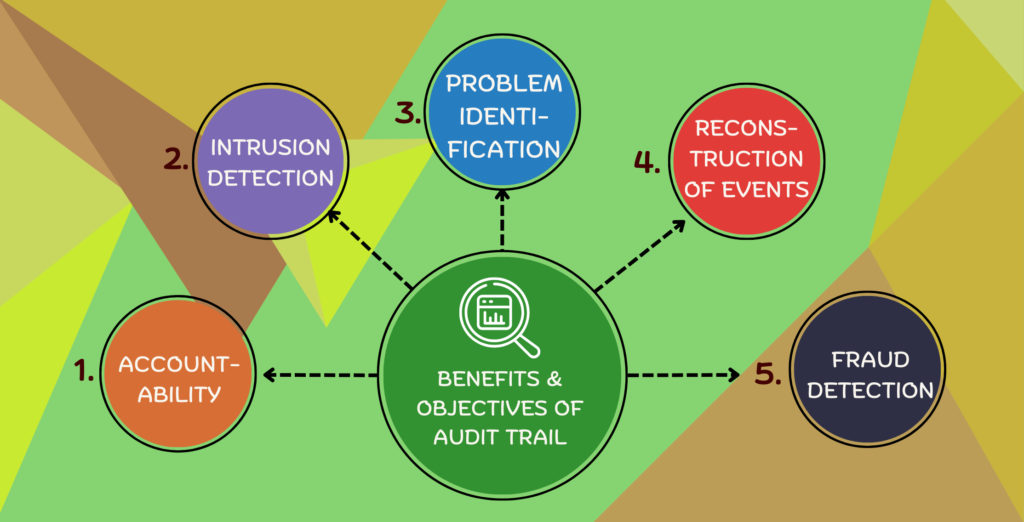The Crucial Role of Audit Trails

In the dynamic landscape of information technology and digital transactions, the need for robust security measures and accountability mechanisms has never been more critical. One such indispensable tool in this realm is the audit trail. In this blog post, we will delve into the concept of audit trails, exploring what they are, why they are essential, the different types available, their numerous benefits, and the challenges associated with maintaining them.
What is an Audit Trail?
An audit trail is a chronological record of events or actions that provides a detailed account of the sequence of activities within a system, application, or network. Essentially, it acts as a digital footprint, documenting every interaction, access, modification, or transaction made by users or systems. These logs are crucial for tracking changes, identifying anomalies, and, most importantly, ensuring accountability.

Image source: imprivata.com
Why Are Audit Trails Important?
1. Enhanced Security:
Audit trails play a pivotal role in fortifying the security of digital systems. By meticulously documenting user activities and system events, organizations can detect and respond to unauthorized access or suspicious behaviour promptly. This proactive approach is instrumental in preventing security breaches and safeguarding sensitive data.
2. Compliance and Regulations:
In an era where data privacy and compliance with regulations are paramount, audit trails are indispensable. Many industries, such as finance, healthcare, and government, have stringent regulations that mandate the maintenance of comprehensive audit logs. These records serve as evidence of adherence to industry-specific standards and can be crucial during audits.
Types of Audit Trails
1. System Audit Trails:
These logs capture activities within an entire system, providing a holistic view of user interactions, system changes, and security events. System audit trails are integral to understanding the overall health and performance of a digital environment.
2. Application Audit Trails:
Focused on a specific application, these logs detail user actions, configuration changes, and other relevant events within that particular software. Application audit trails are valuable for identifying issues, tracking user behaviour, and troubleshooting.
3. Database Audit Trails:
In database systems, audit trails document changes to data, schema modifications, and access to sensitive information. These logs are vital for ensuring data integrity, compliance, and investigating any unauthorized access.
The Benefits of Audit Trails

Image source: profitbooks.net
1. Accountability:
Audit trails serve as a powerful deterrent to malicious activities by fostering a sense of accountability among users. Knowing that their actions are recorded encourages responsible behaviour and discourages unauthorized access or tampering.
2. Forensic Analysis:
In the event of a security incident, audit trails provide a detailed timeline of events. This chronological record is invaluable for forensic analysis, enabling organizations to reconstruct the sequence of actions leading to the breach and identify the source of the compromise.
3. Continuous Improvement:
By reviewing audit trails, organizations can gain insights into system performance, user behaviour, and potential vulnerabilities. This information facilitates continuous improvement by identifying areas that require enhancement, thereby strengthening overall security.
Challenges of Maintaining Audit Trails
1. Volume of Data:
In large-scale systems, the sheer volume of data generated by audit trails can be overwhelming. Managing and analyzing this vast amount of information requires sophisticated tools and strategies to derive meaningful insights.
2. Integration and Compatibility:
Ensuring that audit trails are seamlessly integrated into various systems and applications can be challenging. Compatibility issues may arise when attempting to implement standardized logging across diverse platforms.
3. Cost and Resources:
Implementing and maintaining an effective audit trail system necessitates financial investment and allocation of resources. Small organizations may find it challenging to allocate sufficient funds and personnel to ensure the proper functioning of audit trails.
Summary
Despite the challenges, the importance of maintaining an audit trail in today’s business landscape cannot be underestimated. With proper management and utilization, audit trails can provide invaluable insights into business operations, facilitate regulatory compliance, and significantly enhance overall business performance.
*Brought to you by Plexxis Software: Offering software solutions for the construction industry that integrates cloud, mobile and on-premise software to improve and enhance team performance.
Share:
New From Plexxis

Difference Between Structured and Unstructured Data

The Cost of Data Breaches in the Construction Industry


